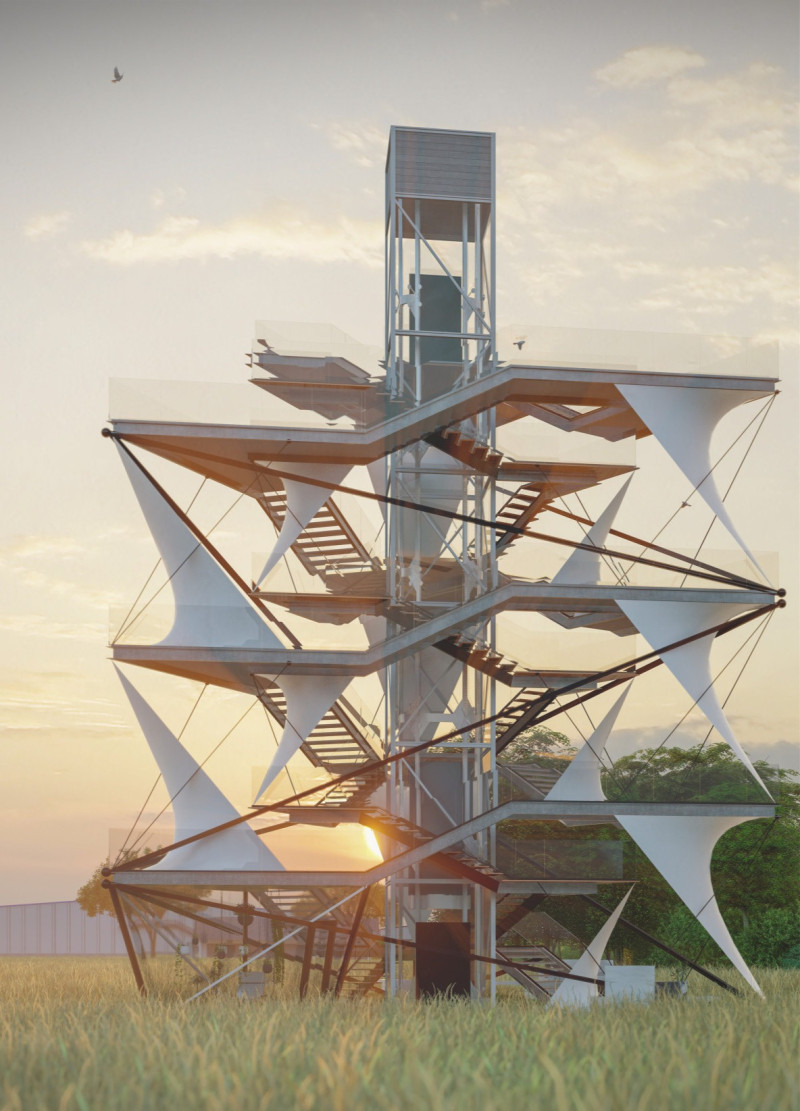5 key facts about this project
At its core, the project serves multiple purposes, functioning as a communal space that invites interaction while also providing areas for individual reflection. This duality in function is an essential facet of contemporary architectural design, allowing for a blend of social and private experiences. The layout is organized to facilitate movement and promote social connectivity among users, reflecting an increasingly collaborative approach to architecture.
The design showcases an array of unique elements that distinguish it from typical architectural offerings. The exterior features are characterized by a harmonious blend of natural materials and innovative construction techniques. The predominant use of locally sourced timber and reclaimed stone not only binds the building to its geographic context but also emphasizes an ecological sensitivity that is paramount in current architectural discourse. The choice of these materials contributes to a warm, inviting aesthetic while also ensuring durability and low maintenance.
Large, strategically placed windows allow natural light to flood the interior spaces, promoting a sense of openness and connection to the outside environment. This design strategy is a deliberate nod to biophilic principles, enhancing the occupant's well-being by fostering a direct relationship with nature. The incorporation of green roofs and sustainable landscaping further enhances this connection, creating a micro-ecosystem that supports local biodiversity.
Moreover, the project embraces innovative design approaches that challenge conventional architectural narratives. The use of modular design elements facilitates adaptability, allowing spaces to evolve based on the changing needs of the community. Flexibility is a key consideration in contemporary architecture, and this project demonstrates an understanding that environments must accommodate growth and change.
Key architectural details showcase the project’s commitment to craftsmanship and design integrity. Intricate joinery, carefully considered proportions, and an emphasis on texture enhance the sensory experience of the space. These details are not merely for aesthetic appeal; they contribute to the functionality and efficiency of the building, embodying the ethos of design that serves its users.
One significant aspect of this project is its integration of technology. Smart building systems are employed to optimize energy use and enhance occupant comfort, exemplifying a forward-thinking approach to architecture. These systems not only improve the performance of the building but also provide a framework for future expansion and technological adoption, aligning with the principles of resilient design.
As an architectural vision, this project is a testament to the power of design in shaping communities. Its thoughtful articulation of space, materiality, and environmental responsibility reflects a contemporary understanding of architecture that prioritizes human experience. The seamless blend of function and aesthetics invites users to explore the myriad spaces within, encouraging engagement and interaction.
For those intrigued by the intricacies of this project, further examination of the architectural plans, sections, and designs is essential to fully appreciate the depth of thought and intention behind each element. This exploration will reveal the nuanced architectural ideas that underpin this noteworthy project, showcasing the potential of design to enrich our built environments and lives.


























